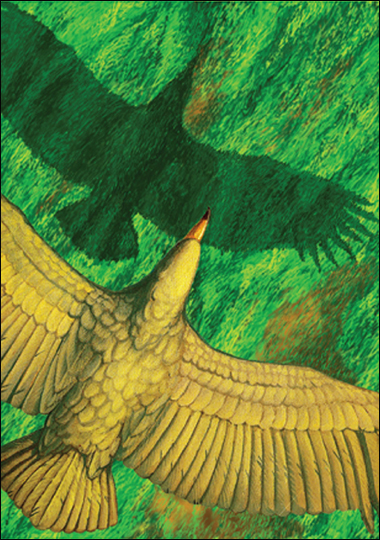 Scientists have unearthed the fossilized remains of a prehistoric bird with a wingspan of 17 feet! The Latin name given to the new species, Pelagornis chilensis means “huge pseudoteeth” because it had bony tooth-like projections.
Scientists have unearthed the fossilized remains of a prehistoric bird with a wingspan of 17 feet! The Latin name given to the new species, Pelagornis chilensis means “huge pseudoteeth” because it had bony tooth-like projections.The enormous wingspan gave P. chilensis certain advantages, like the ability to travel long distances and reach areas of the open ocean thick with potential prey. The researchers think it feasted on fish and squid, and may have trolled its hunting grounds with its lower beak skimming the water until its teeth could clamp down on a wriggling meal. But lead researcher Gerald Mayr says that a 17-foot wingspan is probably close to the maximum for a flying bird.The bird flew over South America between 10 and 5 million years ago, which means it may have been seen by our hominid ancestors.

The prehistoric South American bird Argentavis magnificens had a wingspan of 23 feet! That makes this bird about the same size as a Cessna light aircraft. Scientists think Argentavis was too big and heavy to flap its wings, but could fly by taking advantage of thermals and updrafts.

No comments:
Post a Comment